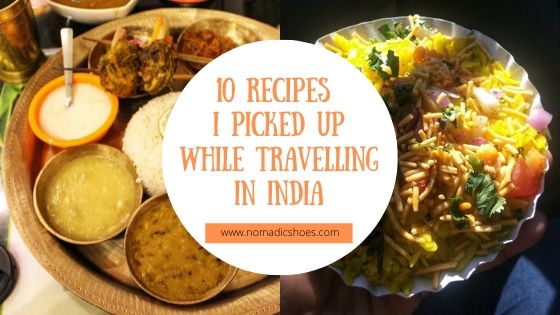
Travelling involves all our five senses. We soak in the beautiful sights, hear the plethora of sounds, tickle your tastebuds with various cuisine, touch surfaces that are unique to a culture and experience the way of life of the locals. After travelling for more than 10 years, I have understood the intimate relationship between travel and our senses. In this post, I am going to share with you my favourite 10 recipes that I have picked up while travelling in India.
For me, travel is all about experiencing. I experience a place through its sights and food. If someone asks me what I rememberer about a destination, my memory will always be related to food! 🙂
So, let me share with you my readers ’10 Recipes I Picked Up While Travelling in India’.
1. Cucumber Kichadi – Kerala
Over the last five years, I have frequented Kerala many times because Doulos is from there. In North India, we think the Kerala cuisine consists of only Idli, Sambar, Dosa and upma. It was not until I married my partner that I came across the wide range of vegetarian as well as non-vegetarian dishes that comes from God’s own country.
The first few days after Doulos and I got married in Kerala, I saw and ate various dishes that I never could have imagined. While growing up, I hated veggies and even to this date I eat very selected range. So, when my mother-in-law made Doulos’s favourites, I just gulped most of them. Over the years, I have come to like many traditional dishes from Kerala and one of them in Cucumber Kichadi. I love cucumber but never thought I will eat it in a curry form. Part of the Onam Sadhya, Cucumber Kichadi has a mildly sweet flavour and makes it a perfect accompaniment with rice.

Recipe of Cucumber Kichadi
Ingredients:
- 2 Medium sized cucumbers
- 1 cup of curd
- 1/2 cup grated coconut
- 1 teaspoon mustard seeds
- 1 small onion/shallots
- 2 green chillies
- 1/2 teaspoon cumin seeds
- 2 dried red chillies
- 1 sprig curry leaves
- 1 cup water
- Oil
- salt
Method:
- Grind the coconut, green chillies, onion and cumin seeds. Keep this aside.
- Cook cucumber [diced] in one cup of water in a van. Once the water evaporates, add the coconut mix with the cucumber. Cook it for 3 minutes and switch off the gas.
- For tempering – heat oil, add mustard seeds, dried red chillies and curry leaves in a separate pan.
- Beat curd with 3 tablespoons of water to make the consistency runny.
- Add the beaten curd to the cucumber-coconut mix and stir it till it coats everything and add tempering over it.
- Serve hot with rice, fish curry/dal.
2. Paniyaram/Appe – Pondicherry
I had Paniyaram for the first time in Pondicherry in 2015. It was a backpacking trip and we were avoiding eating at fancy places. While roaming the streets in the evening in search of cheaper food options, we chanced upon street vendor selling Paniyaram. Laura and I, took one plate for Rs. 20 for 5 pieces first but we liked it so much that the second and third plate was unavoidable.
After a few years, I bought an Appe Pan from Amazon and now once a week we eat Paniyaram for breakfast.
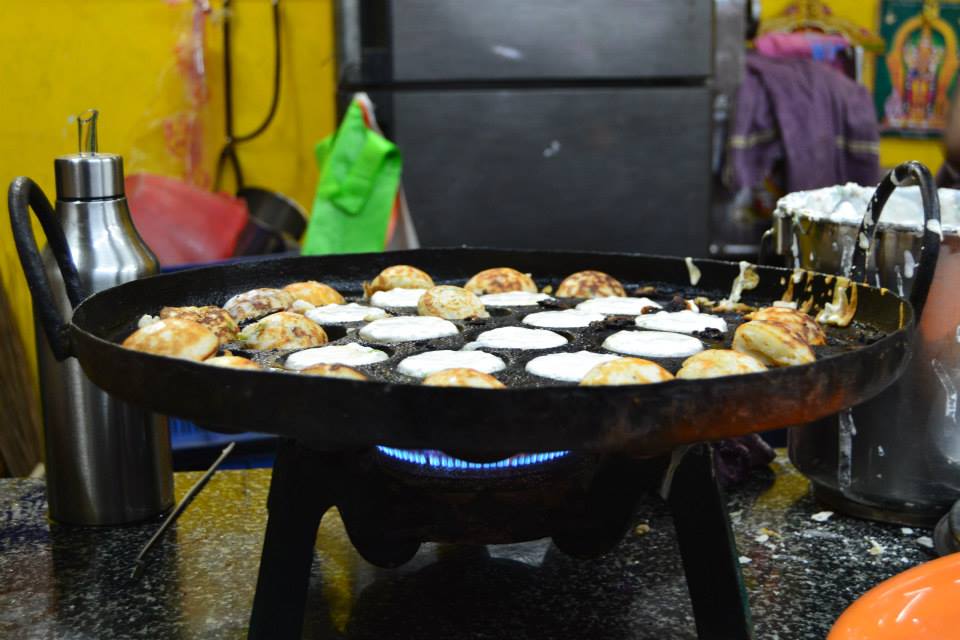
Paniyaram being sold as street food 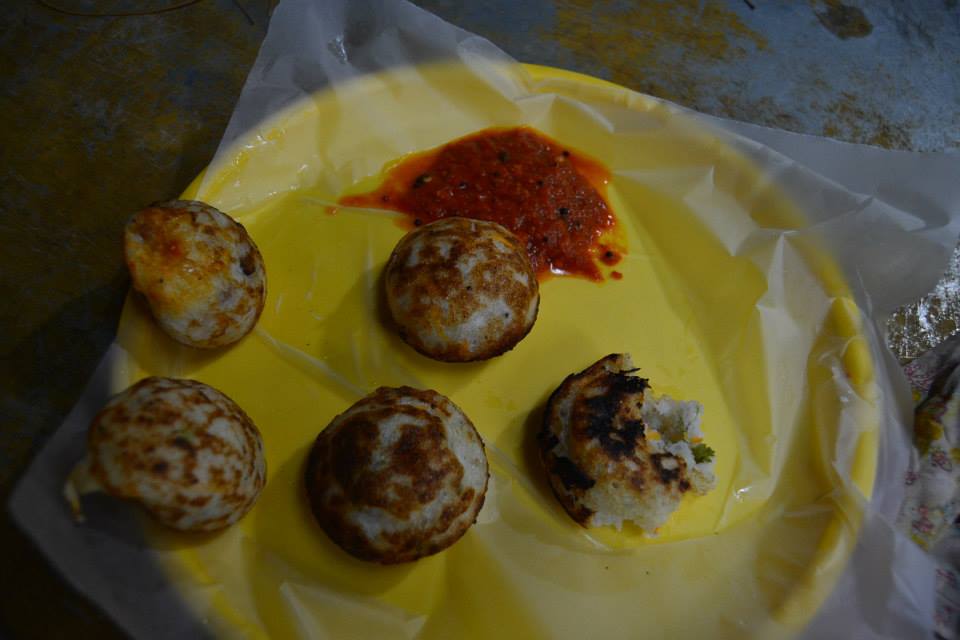
Paniyaram with chutney
Recipe of Paniyaram
Ingredients:
- 1 cup sooji
- 1/3 cup curd
- 1 Medium sized onion
- 2 Green chillies
- 1/3 cup of grated carrot
- 1/4 cup of grated coconut [optional]
- 1 tablespoon Mustard seeds
- 1 sprig curry leaves
- 1/2 teaspoon red chilli powder
- Oil
- Salt
Method:
- Mix sooji and curd in a bowl. Keep the mix aside for 10 minutes. The consistency should be like idli batter.
- Mix all the ingredients – onion, green chillis, carrot, coconut, salt and red chilli powder.
- Heat the appe pan, add two drops of oil in each mould. Once the oil is heated, add a few mustard seeds, two curry leaves and then add two spoons of the paniyaram mix into the mould.
- Let the batter to cook for a few minutes and then turn so that the other side also gets cooked properly.
- Serve hot with sambar or onion tomato chutney.
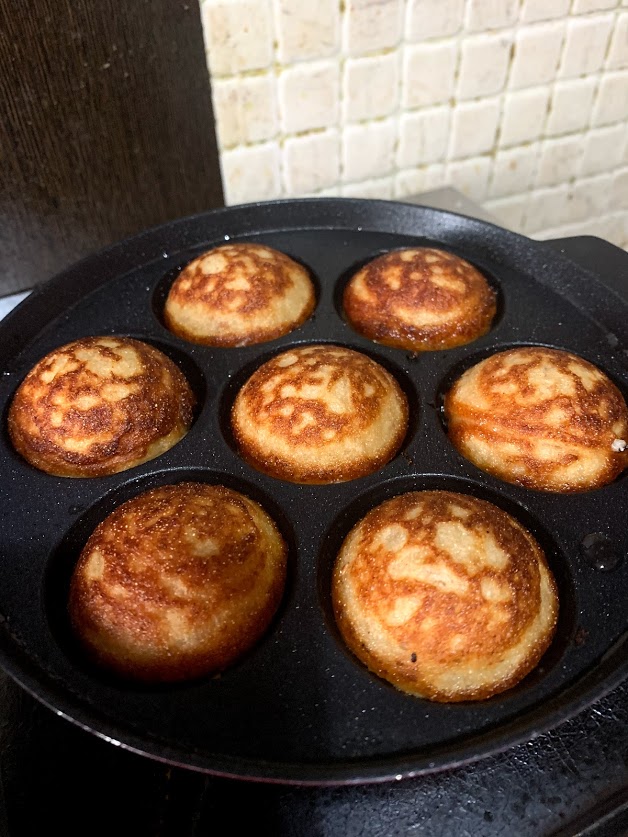
3. Poha – Madhya Pradesh
Poha was almost a staple food while growing up in Kolkata. I only came to know about the different varieties when I started travelling. The first time I remember eating Poha [outside my house] was in Itarsi in Madhya Pradesh. Right outside the railway station, a street vendor was selling Poha with jalebi. What a treat it was, although the main ingredient is same [beaten rice], the method and other ingredients used in Poha varies from state to state.
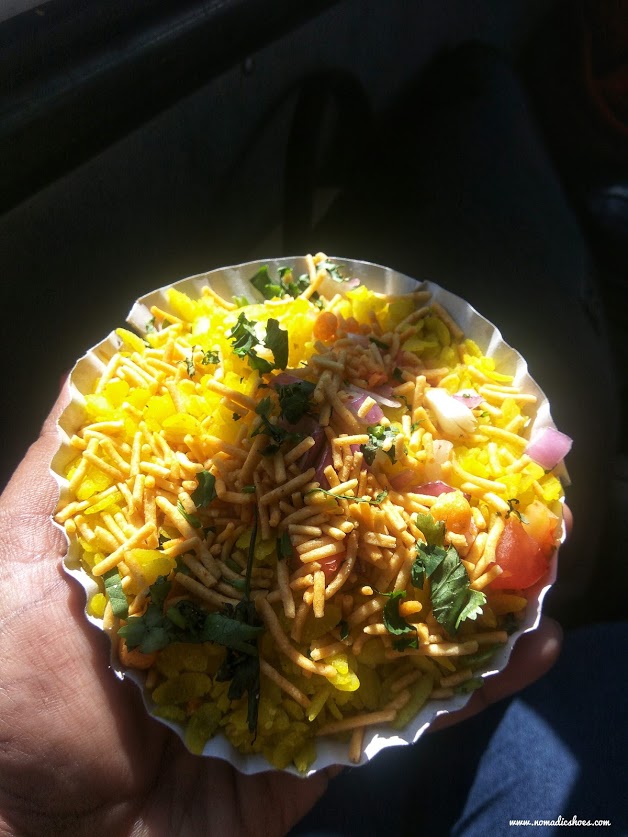
Poha in Rajasthan 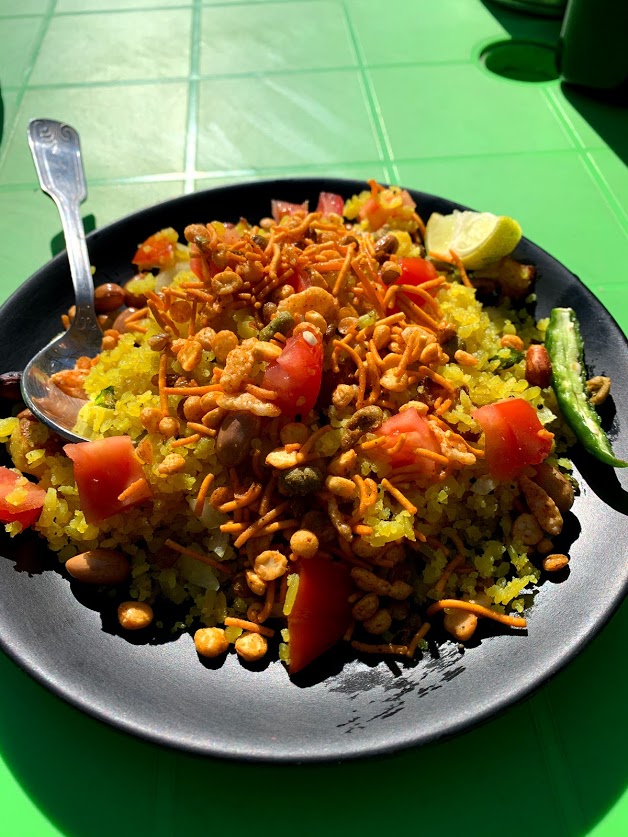
Poha in the mountains
The choice of veggies, the spiciness and the accompaniments with which it is eaten divides the country. But it is the love for this humble breakfast recipe that unites us all.
Recipe of Poha
Ingredients:
- 1 cup Poha [Beaten/flatten rice]
- 2 teaspoon oil
- 1 teaspoon Mustard seeds
- 5 curry leaves [Optional]
- 1 medium sized onion [chopped]
- 2 green chillies [chopped]
- ½ cup vegetables of your choice [Potato, carrot, capsicum, tomato, corn, beans]
- 1 lemon
- 2 teaspoon peanuts
- 1 teaspoon sugar [Optional]
- 1 teaspoon Turmeric powder
- ½ teaspoon red chilli powder [Optional]
- Chopped coriander leaves [for garnish
- Salt
Method:
- Use a strainer to wash the poha under running water. Wash it for 2 minutes and keep it aside.
- Heat oil in a wide pan, add mustard seeds, curry leaves, green chillies. Once it crackles then add chopped onion and sauté it for a minute.
- Add ½ of mix veggies as per your choice and sauté it for 3 minutes. If you are using potato and carrot then it might take more time to get cooked, in that case add some water and cover it. Once all the veggies are cooked, add salt, red chilli powder, turmeric powder and sugar.
- After 1 minute of adding the spices, add poha and give it a mix. When the poha changes colour from white to yellow then squeeze the lemon and mix it.
- Garnish it with chopped coriander and peanuts.
- Serve hot. You can also garnish the poha with aloo bhujiya or eat it with jalebi.
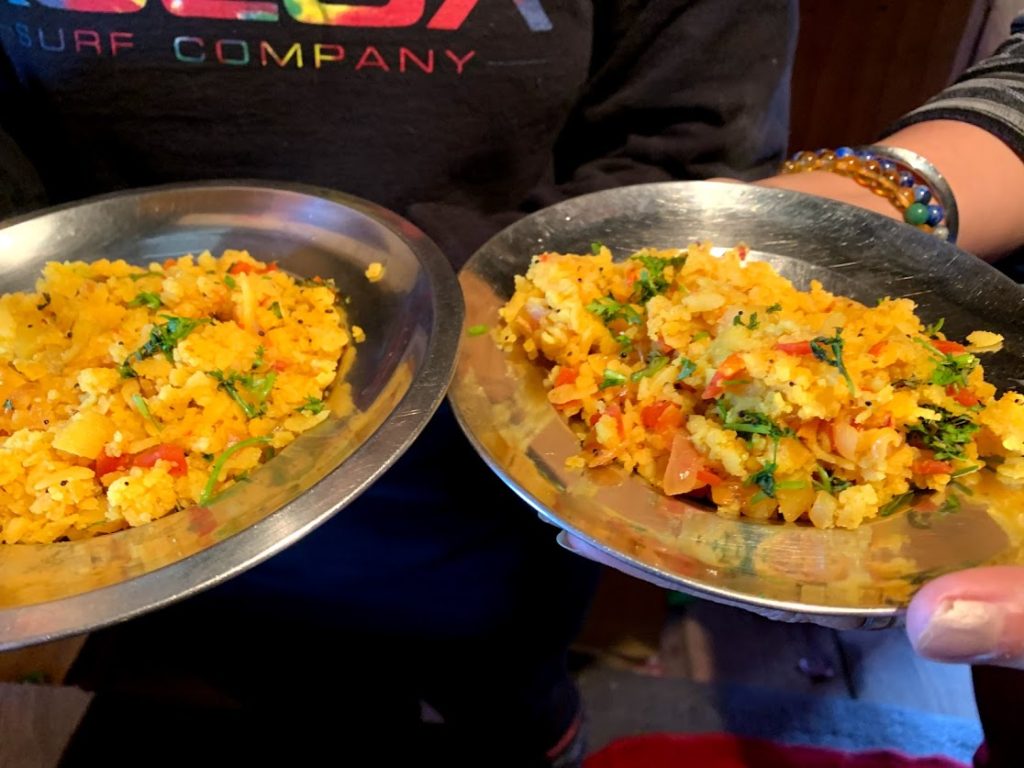
4. Sev Puri – Maharashtra
My parents used to love going to Mumbai. Every year, it was like going to a pilgrimage. It was on the beaches of Juhu and Chowpatty I tasted this delectable sweet and tangy snack. Mostly people like Bhelpuri but this cousin of bhelpuri has my heart. Many years back, I picked up the recipe from a street vendor in Mumbai and added my own tweaks to it.
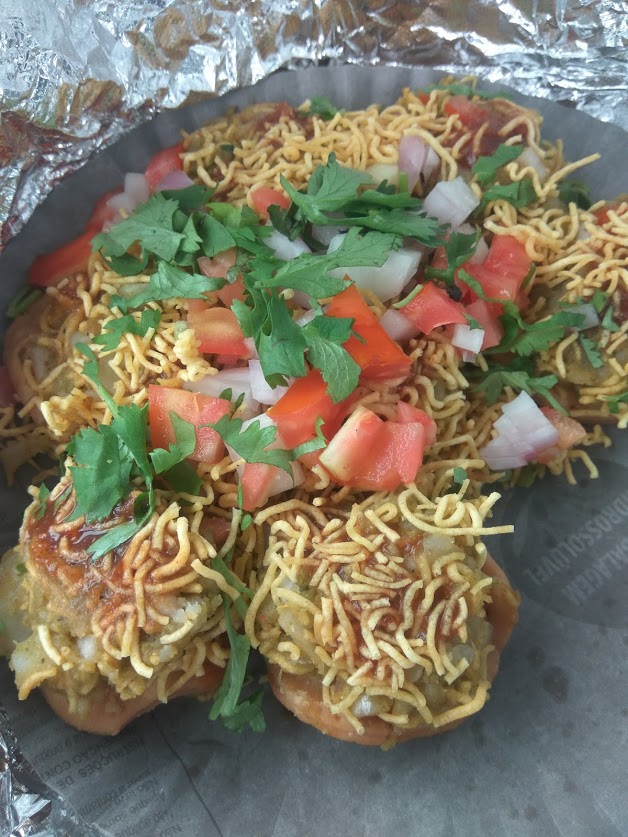
Recipe of Sev Puri
Ingredients:
- 8 papdis
- 1 boiled potato [chopped]
- 1/3 cup sev
- 2 tablespoons of beaten curd
- 1 medium sized onion
- Green chillies [optional]
- 1 small sized tomato
- Coriander leaves [for garnish]
- 2 Tablespoons of boiled black chana
- Sweet tamarind and coriander chutney [as per liking]
- Red chilli powder
- Roasted cumin powder
- Chaat masala
- Salt
Method:
- Place the papdis on a plate, add chopped boiled potatoes and chana over individual papdi.
- Add chopped onion and tomato.
- Drizzle sweet tamarind, beaten curd and green chutney. Sprinkle red chillies and roasted cumin powder. Add salt as per taste.
- After you have assembled everything, sprinkle a generous amount of sev on top.
- Garnish with coriander before serving.

5. Bhajia – Chhattisgarh
Fuluri, a bengali evening time snack which is eaten with ‘cha’ (tea) and ‘muri’ (puffed rice). Bhajia is not a distant cousin of Fuluri, they are almost same but bhajia is more crispier and usually taken for breakfast. I had the opportunity to taste bhajia in Bastar, Chhattisgarh. Last year, I attended Bastar Dussehra with Unexplored Bastar and they arranged for us to camp near Chitrakote waterfalls. The camp was fully run by young tribals boys and girls. It was here that I tasted bhaija with chaprah chutney [made of red ants].
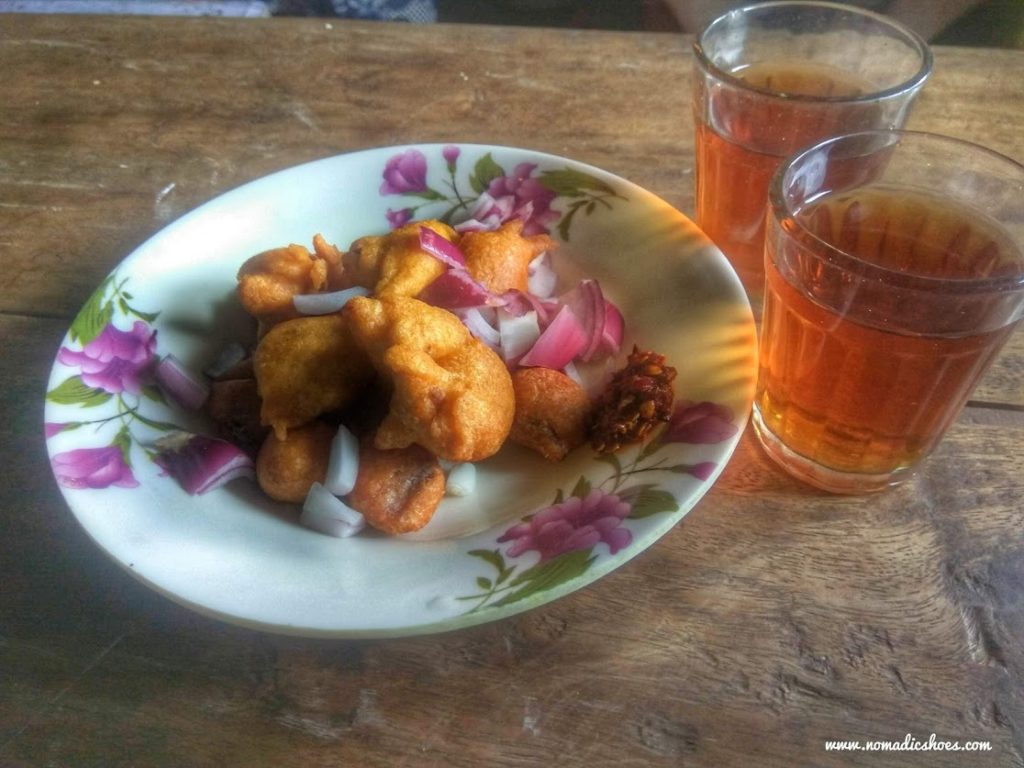
Recipe of Bhajia
Ingredients:
- 1 cup chickpea flour
- 1/2 cup of chopped onion
- 2 Green chillies [chopped]
- 1 teaspoon ajawain
- Coriander leaves [chopped]
- Salt as per taste
- 1/3 teaspoon baking soda
- Water [as required]
- Oil [for deep frying]
Method:
- In a big bowl, mix chickpea flour, chopped onion, chopped green chillis, coriander leaves, caraway seeds and baking soda.
- Add water and make it into smooth paste consistency.
- Heat oil in a wide pan and deep fry bhajiyas by putting small dollops into the oil.
- Fry till crisp and serve with chutney of your choice.
6. Rhododendron Juice – Uttarakhand
The warm sun was over our heads and we were marching towards our marked destination in Ranikhet, Uttarakhand. Tired and almost at the end of my wits after hiking for a while. Our guide pushed us to complete the track which was another 15 minutes away. Huffing and puffing, we managed to reach our destination. Upon reaching, our guide took out the huge bottle that he was carrying with him throughout the journey and served us Buransh Sharbat/Rhododendron Juice. The sweet fragrant juice refreshed us instantly and the sharp flavour of lemons added the right amount of tang.
After Ranikhet, I always look for buransh juice wherever I go in Uttarakhand. Most home-stays and hotels serve it as a welcome drink. One can also buy a rhododendron syrup from local shops.
Recipe of Rhododendron Juice
Ingredients:
- 6 cups Water
- 1 cup Sugar syrup
- 1.5 kg Rhododendron flowers
- 8 Lemons
- 3 cups of fresh rose petals
Method:
- Wash the Rhododendron flowers properly by removing the pistils. Use cold water for washing.
- Take a wide pan, simmer 2 litres of water for 3 minutes and then add the rhododendron flowers into it.
- Boil it for 15 minutes. Add rose petals and continue to boil it for 5 more minutes.
- Switch off the gas and let it cool for 40 minutes.
- Sieve the rhododendron flowers and rose petals and separate it from the water.
- Add sugar syrup to the boiled water and stir it properly till the syrup gets diluted completely.
- You can store this concoction for upto 5 weeks in the fridge.
- Before serving add a dash of lemon juice for a tangy flavour.
- You can adjust the taste by mixing it with additional water or sugar or lemon as per your liking.
7. Shapale – Sikkim
Many years back, Ritu and I embraked upon our journey to Sikkim during our Diwali holidays. We spend our Diwali in a quaint village called Dzongu in North Sikkim. Our hostess was an exceptional cook, she created such beautiful dishes for us from locally sourced materials. From edible flowers to veggies I never heard before, she made us try their Lepcha tribal cuisine. To be honest, I do not experiment with food much. I like to stick to the ingredients I know of. So when she served us Shapale, I was more than happy.
Shapale is originally a Tibetan dish but due to the influence of Tibet, Bhutan and Nepal, the culinary culture of Sikkim takes a lot from these countries. Shapale is a delicious basically meat pies which are made of all purpose flour and then fried. They are usually served with soup or rice for lunch.
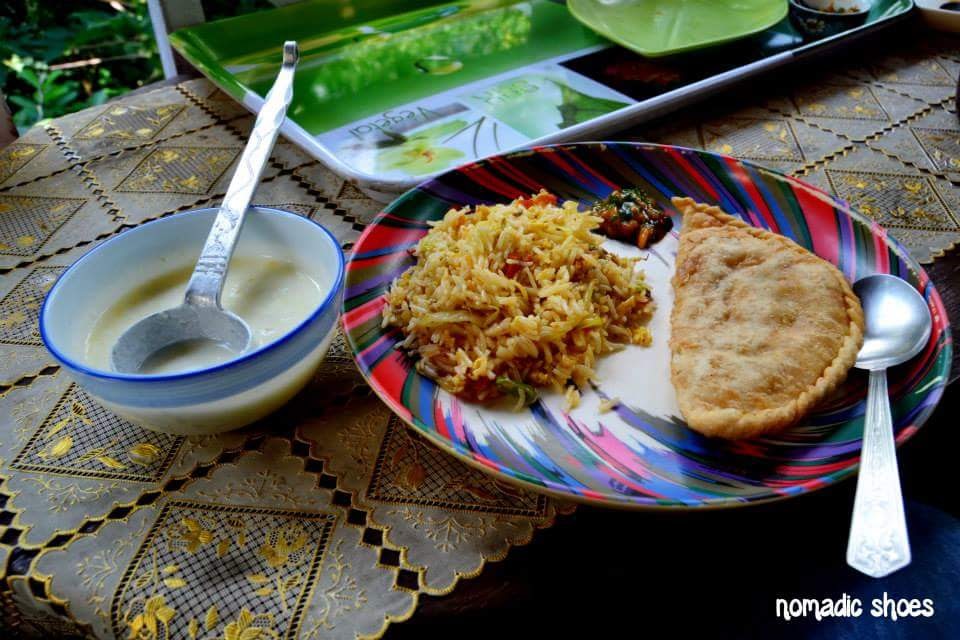
Recipe of Shapale
Ingredients:
- 2.5 cups of maida [all purpose flour]
- 1 cup of water [cold]
- 200 grams minced meat [mutton/beef tastes better]
- 2 finely chopped spring onion
- 2 tablespoon finely chopped ginger and garlic
- 1/2 cup chopped coriander leaves
- 1 cup of chopped onion
- 1 tablespoon soy sauce
- 2 tablespoon of chilli flakes [optional]
- Oil for frying
- Salt to taste
Method:
- Knead the dough with maida and water and keep it aside for 2 hours by covering it with a wet cloth or put it inside a plastic bag.
- After 2 hours, make balls out of the dough and using a rolling pin roll out the balls into your desired shape for the shapale.
- For the filling – In a pan heat oil and add minced meat, ginger-garlic, chopped spring onion, coriander leaves, onions, soy sauce, chilli flakes and salt. Let it cook till the time the meat becomes tender.
- Once the filling is prepared, start putting 2 tablespoons of filling inside individual rolled out dough. You can adjust the filling quantity as per your liking.
- Pinch the edges of the dough after you have filled the filling mixture.
- For frying – heat 4 tablespoons of oil in a pan, and start putting Shapale one by one and lower the flame to medium. Cook till the time the outer layer turns golden brown. It will take around 8 minutes on each side.
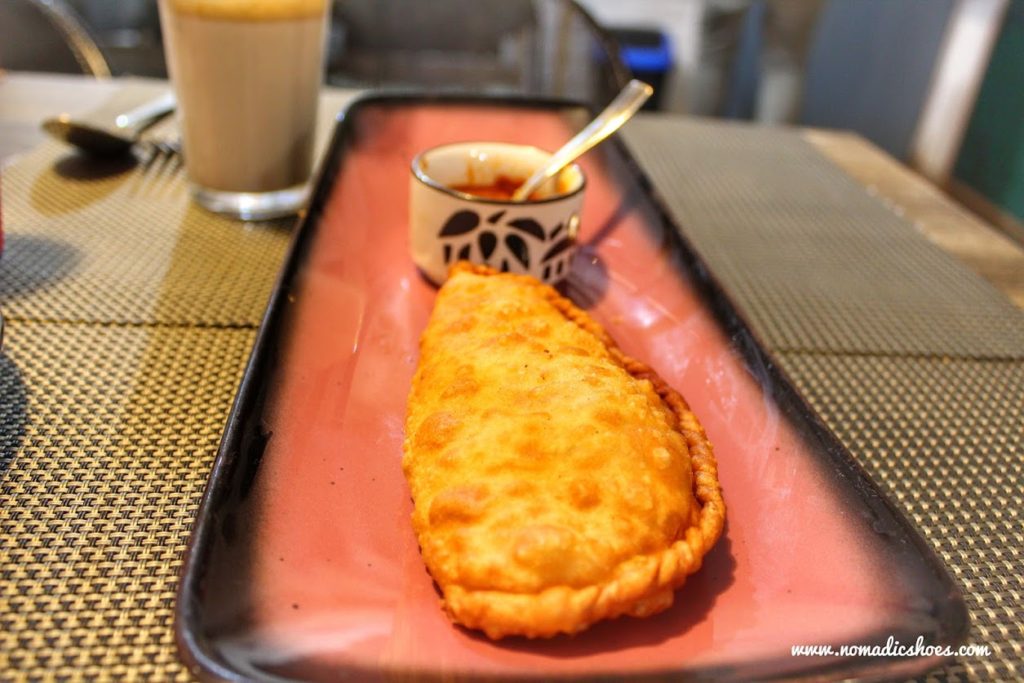
8. Gun Powder/ Chutney Podi – Tamil Nadu
The very first time I had gun powder was when a colleague bought idlis in her tiffin at work. I was in love with the taste at the very first bite. Since then, every week Vasumati Maam [my colleague] was told to bring podi idlis at least twice a month. Vasumati Maam, gave me the recipe but it was not until last year that I made podi powder.
One summer afternoon in June last year, my sister-in-law, Dany and I made podi powder. Before this, she was always my go-to source for stocking up podi powder. Every time we visited Kerala, Dany would make a batch for me specially. She was living in Tirunelveli in Tamil Nadu at the time and I was visiting her for my summer break. With Dany’s own twists, she taught me how to make gun powder.
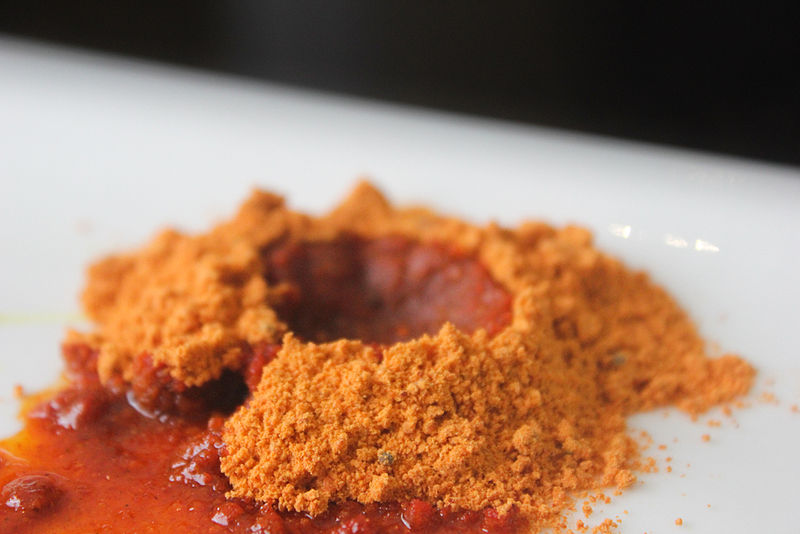
Picture Credits: Wikipedia
Recipe of Gun Powder
Ingredients:
- 1/2 cup Urad dal
- 1/3 cup Chana dal
- 1/4 cup of red lentils/masoor dal
- 4 tablespoons of sesame seeds/ til
- 2 tablespoon of rice
- 12 dried red chillis
- 3 sprigs of curry leaves
- 1 tablespoon of black pepper corns
- 2 teaspoon asafoetida
- Salt as per taste
Method:
- In a wide pan, add all the dals – urad, chana and masoor along with sesame seeds. Dry roast them till golden brown and keep is aside.
- In a second pan, add rice, black pepper corns, curry leaves and red chillies. Dry roast them till the time the curry leaves becomes crisp.
- Mix both the dry roasts together. Let it cool.
- After 1 hour or so, transfer the mixture to a grinder and add salt and asafoetida. Grind it till coarse and store it in a jar.
- Before serving, add a some ghee [depends on the consistency of the chutney you like]. Serve it with idli, dosa or rice.
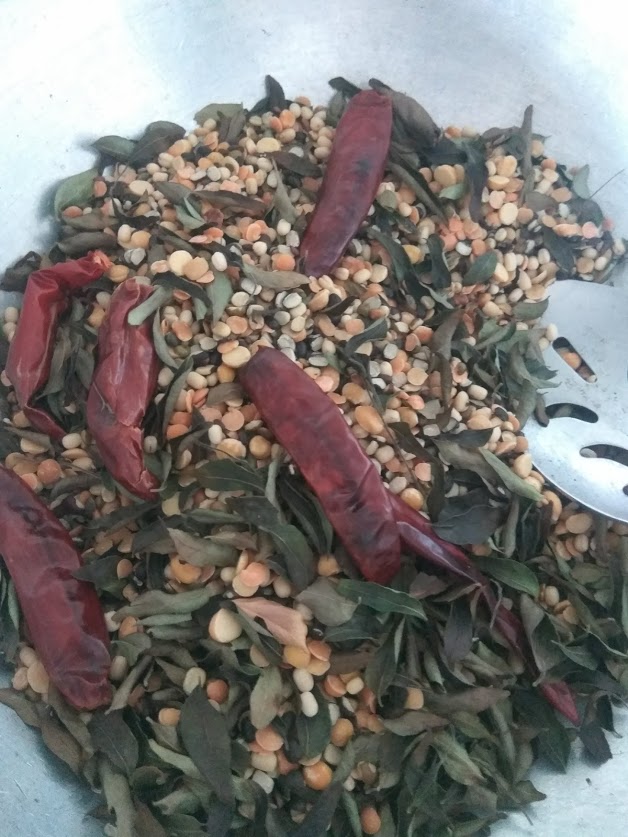
9. Dabeli – Gujrat
Even though Dabli originated from gujarat, this popular street food is a favourite in Maharashtra and Rajasthan. I had Dabeli in Udaipur by chance. It was a Sunday and most places were closed in the outskirts of Udaipur, it was then we found a street cart selling Dabeli. We were unsure at first so we bought only one to be shared between four people. But then, we all ordered two each of this yummy snack from Kutch.
Later on, I found a restaurant near my house selling Dabeli in Delhi. Whenever I was not in a mood to cook, I used to order Dabeli to satisfy my hunger pangs.
Recipe of Dabeli
Ingredients:
- Ladi pav/ normal pav
- 3 boiled potatoes [mashed]
- Sweet tamarind chutney [for mixing with potatoes and assembling the dabeli]
- 1/4 cup of chopped onion
- Peanuts
- 4 tablespoons of pomegranate seeds
- 1/2 cup of sev
- Butter
- Garlic chutney
- 3 tablespoons of coriander leaves [finely chopped]
- 2 tablespoons of oil
- Dabeli chutney powder [coriander seeds, seseme seeds, fennel seeds, jeera, black pepper corns, cloves, cinnamon, bay leaf, star anise, black cardamon, dried red chillies and grated coconut – dry roast and grind. Add aamchoor, salt, red chilli powder, sugar, 1 tablespoon oil and saunt]
- Salt as per taste
Method:
- In a pan, heat oil and add sweet tamarind chutney and dabeli chutney powder and 2 tablespoon of water and cook it for 2 minutes.
- Add the boiled mashed potatoes and salt to the mixture and stir it continously for a few minutes. Add a bit of water if its sticking to the pan.
- Once the mixture gets cooled down, add chopped coriander leaves and pomegranate seeds.
- Cut the pav into halves, spread the sweet tamarind chutney and garlic chutney on each side. Now add the mashed potatoes mix and garnish it with chopped onions, peanuts and sev.
- After assembling the pav with dabeli mix and garnish, heat the pan with 1 tablespoon of butter and toast both the sides of the dabeli before serving.
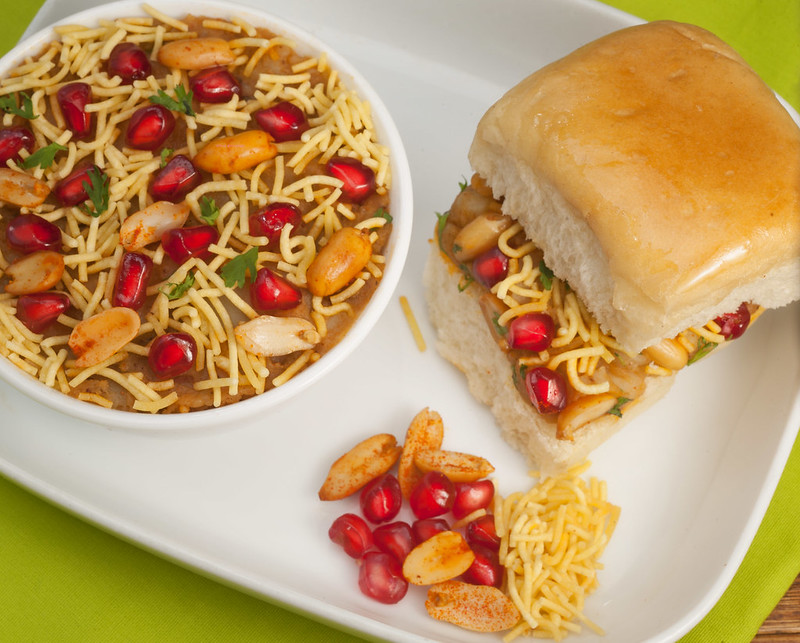
10. Aam ki Launji – Rajasthan/Uttar Pradesh
I don’t exactly remember when I had aam ki launji for the first time. But, it was during my time at Aligarh, Uttar Pradesh that I remember having Launji. Aam ki launji is a favourite side dish in parts of Rajasthan and Uttar Pradesh. Served alongside with parathas, roti, poori and rice, this sweet and tangy accompaniment is loved by everyone.
I enjoy eating it with rice and dal. A simple meal can turn into a tasty affair by adding the wonderful flavours of launji. I got the recipe from a friend in college who belonged to Rajasthan.
Recipe of Aam Ki Launji
Ingredients:
- 5 raw mangoes
- 3 tablespoons of oil
- 1 teaspoon fennel seeds
- 1.5 teaspoon of nigella seeds
- 1/2 teaspoon cumin seeds
- 2 pinch of hing/ asafoetida
- 1/2 teaspoon haldi/turmeric powder
- 1 teaspoon of red chilli powder
- 1/2 cup jaggery [if you don’t have jaggery then use sugar]
- Salt to taste
- Water as required
Method:
- Wash the raw mangoes and cut it into long slices.
- Heat oil in a pan, add the spices – fennel seeds, nigella seeds and cumin seeds. Let it crackle. You can also use a mix of 5 spices called Panch Phoran which is popular in West Bengal, Odisha and Bihar.
- Add the sliced mangoes along with turmeric powder, red chilli powder, hing and salt. Mix it properly and cook it for 3 minutes on medium flame.
- You can add the jaggery with a bit of warm water separately to make it a bit liquidy. Once the jaggery has been dissolved in the water, you can add this to the mango mix.
- Stir for a minute so that everything is coated properly. Add water and cover the pan. Cook for 12 minutes or till the mangoes become soft and the chutney thickens.
- Switch off the gas and let it cool. You can store this in air tight container for a few months.







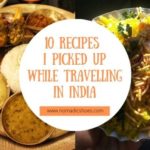



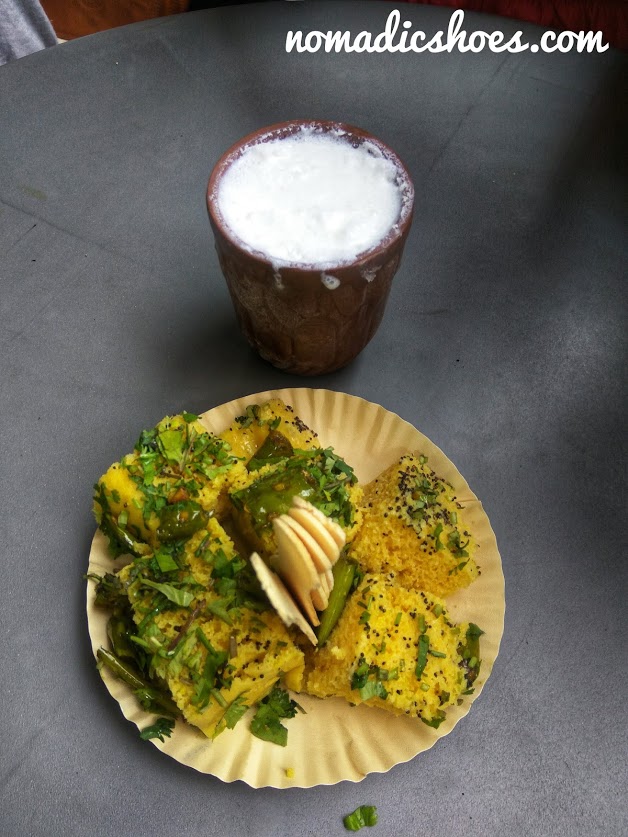
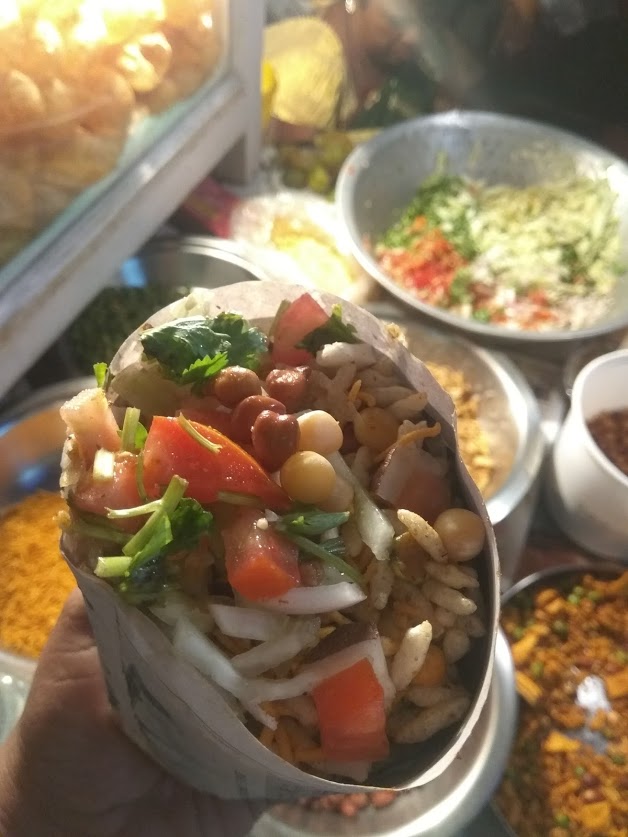
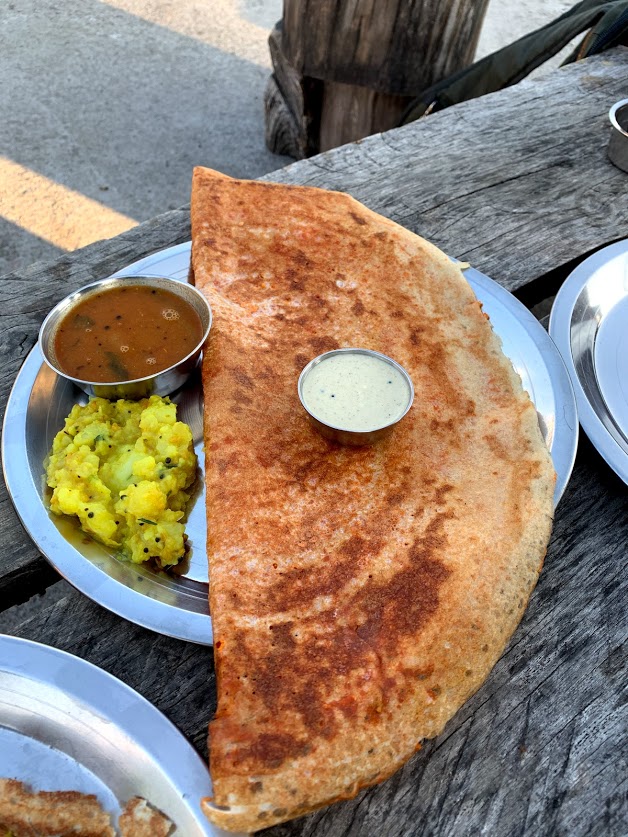

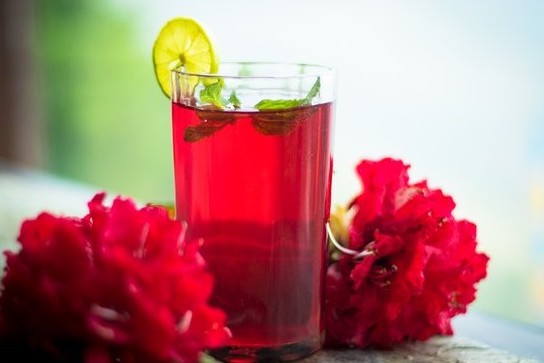
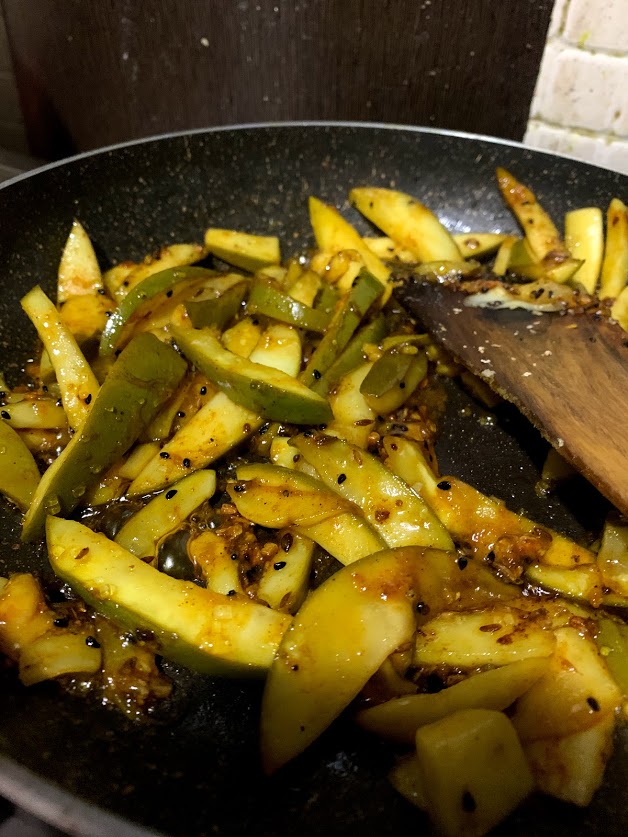
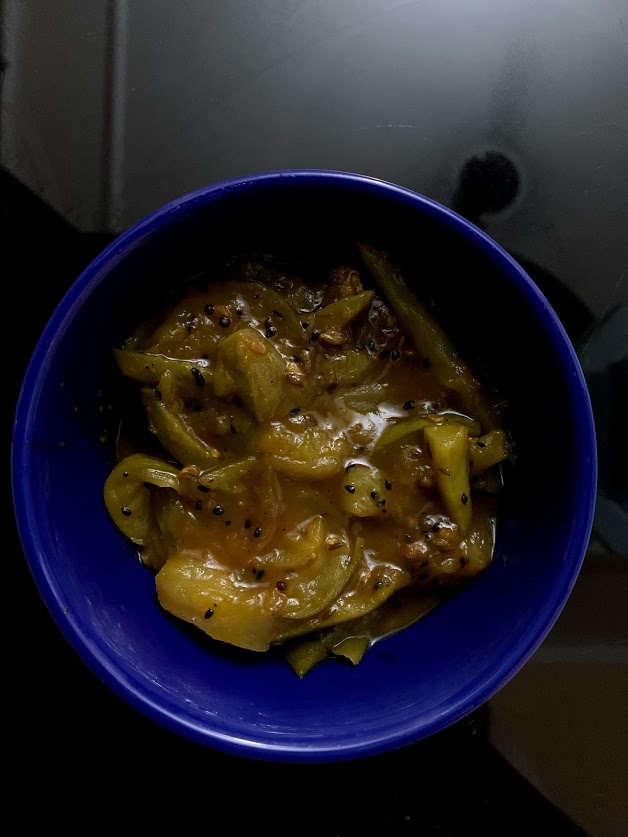
Great recipes! I LOVE Indian dishes, it is so delicious!
The best part about remembering trips based on food like this is that you have the ability to ‘take a walk down memory lane’ any day you want by simply making your favourite dishes. That’s extra special right now with all the travel restrictions that are currently in place… It gives you a fun way to ‘escape’ for a day and pretend you’re visiting other places.
These are such unique recipes. I will have to give a few a try! 🚢👓🍕
These all mentioned food items sounds really delicious and amazing..i have eaten some of them and had a great desire to taste once the Sev puri and now i can make this b y myself yeah..thanks for sharing the recipes this is very helpful…
Thank you for your feedback. Do let me know how did it go with the Sev Puri.
These all sound so good. I have been wanting to try some new recipes and I am a really big fan of curry so I’m sure I will like some of these.
Thanks. Do let me know what you made.
It’s really hard to choose a favourite, they all look so delicious and I’ve learnt so much from reading this. Thanks
I know right! So so difficult to choose a favourite.
I love Indian food so this is super helpful. I am gonna try one tomorrow for lunch.
Thats great! Do you like spicy food? Let me know which recipe you tried.
Love trying new things. Will definitely give some of these a try!
That will be awesome Norma. Do let me know which recipe you try.
All of these recipes look absolutely delicious. One of my favorite thinging s about traveling is trying different types of foods. Love trying things from other cultures, especially.
Thank you Margaret. Even for me travelling is equivalent to food 🙂
I think I’ve never tried Indian cuisine! It looks so tasty and I hope to check some of these recipes out! 🙂
Oh dear! Then you must. We have some amazing recipes.
Now the question is which one do I make first. These recipes sound so delicious.
Thats the right kind of question 🙂 Thank you Tara.
I LOVE LOVE LOVE INDIAN CUISINE!!! You put together the best of the best!!! Can’t wait to cook them all lol…
Thats amazing. Do let me know which recipe you try.
Everything looks so tasty, I want to try them all!!
Thank you Katie for your comment. Do try Indian cuisine, I am sure you will love it.
I would love to try these Indian recipes! It looks delicious!
xoxo
Lovely
http://mynameislovely.com
Do let me know which recipe you try.
Everything looks tasty! I don’t think I’ve ever had any of this food before. I need to give it a try one day.
Do try if you get a chance. I am sure you will love it.
THIS is a huge part as to why I travel!!! I pick up so many tasty ideas that I can bring back to my own kitchen!!
Thats definitely the best part about travelling.
Hey Suman… it made for a great read… thanks for sharing recipes… we have had these things all our lives but never thought of making them at home… especially the gunpowder… that is definitely on my to-do list
Thank you Nidhi 🙂